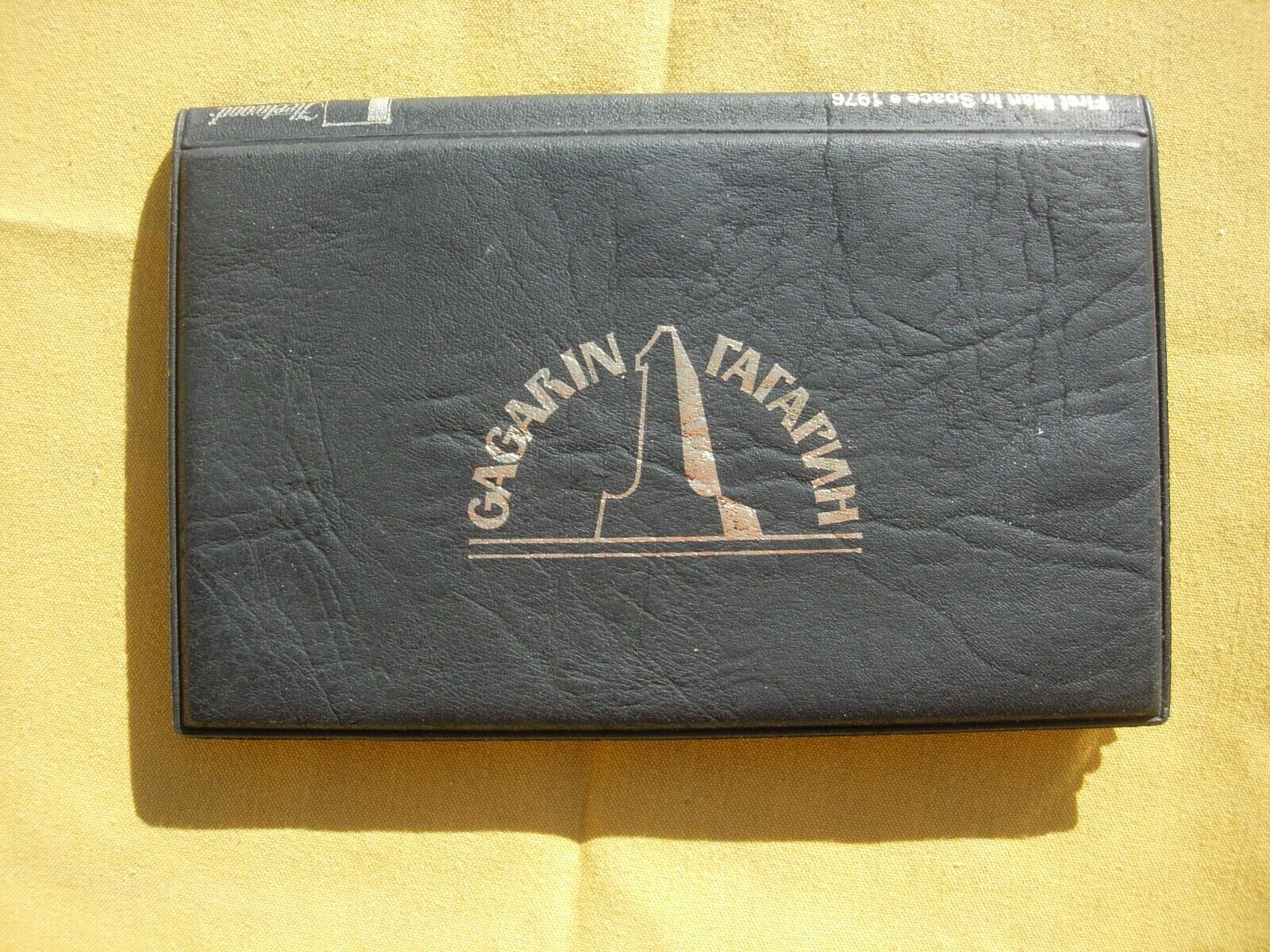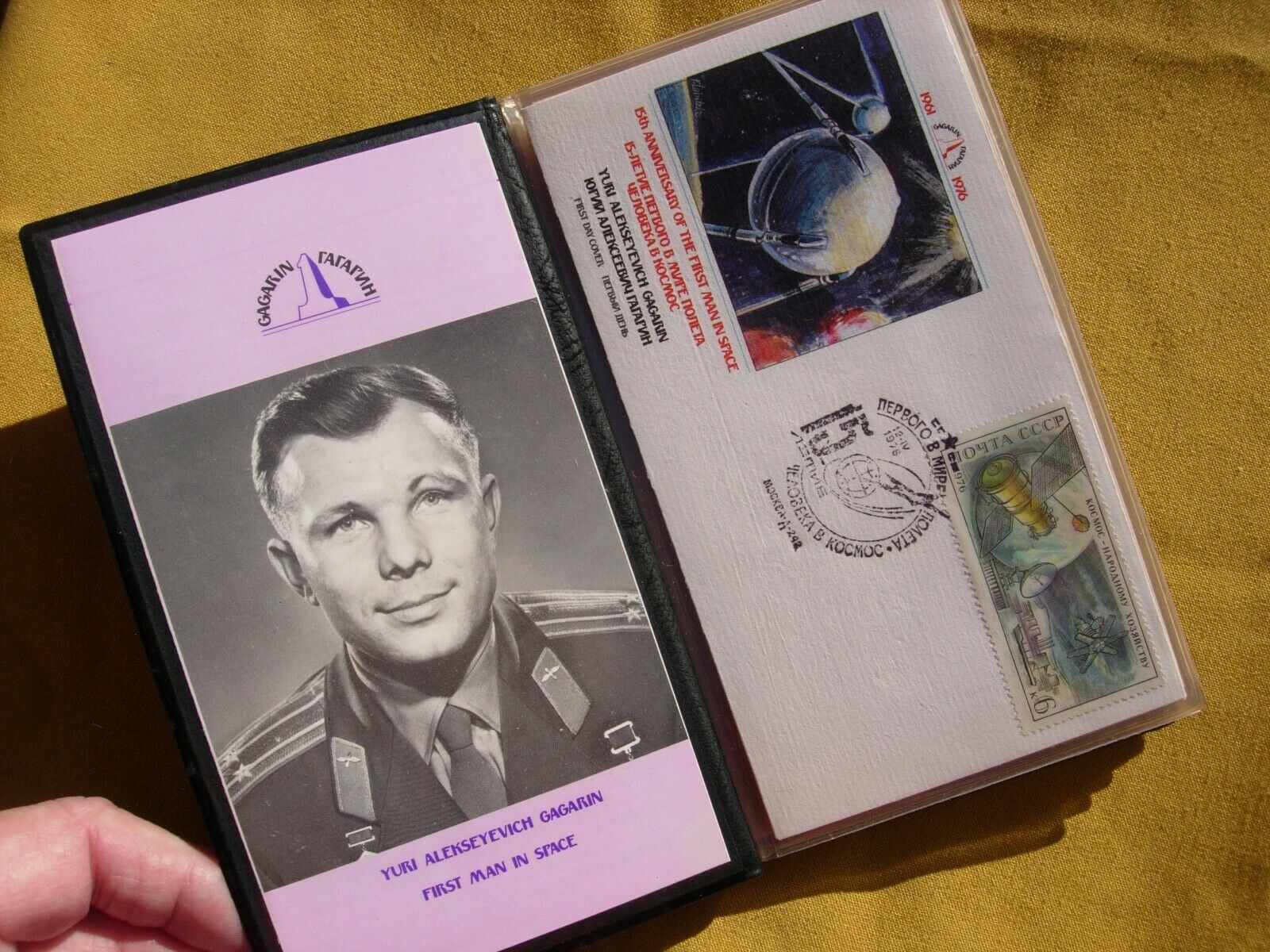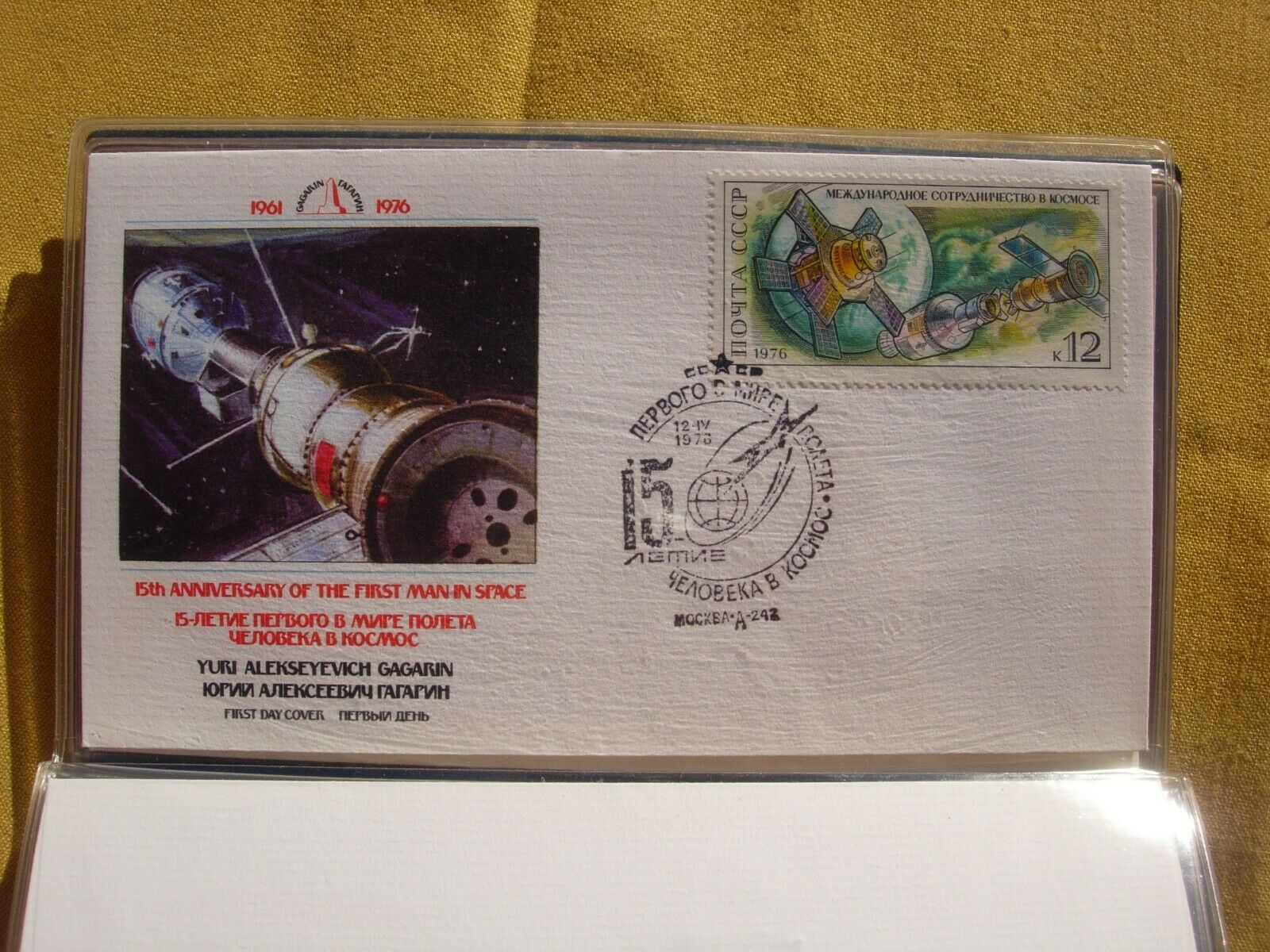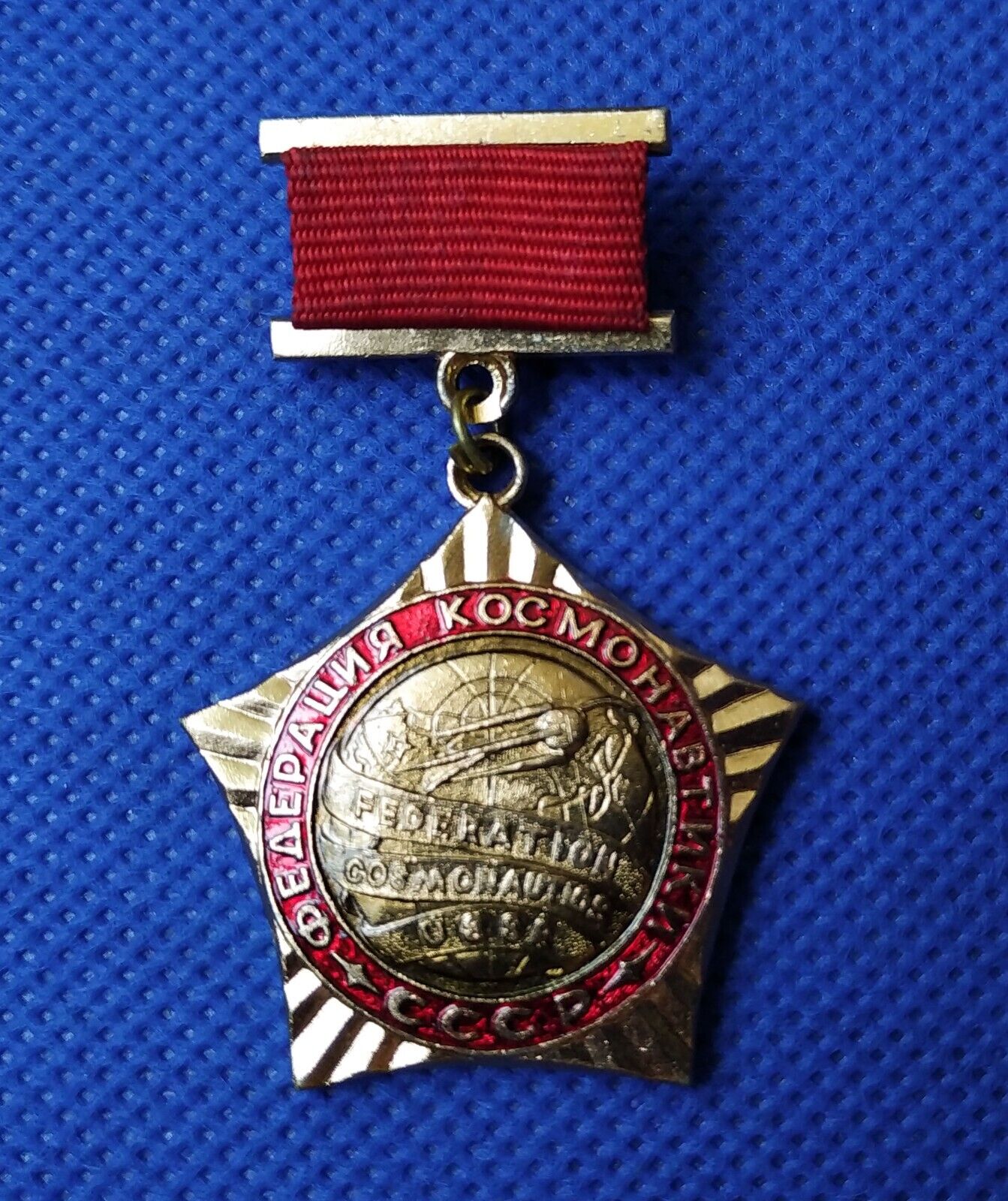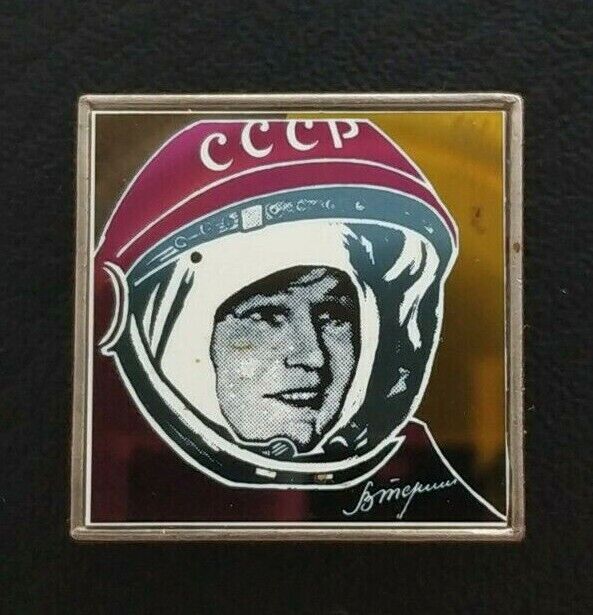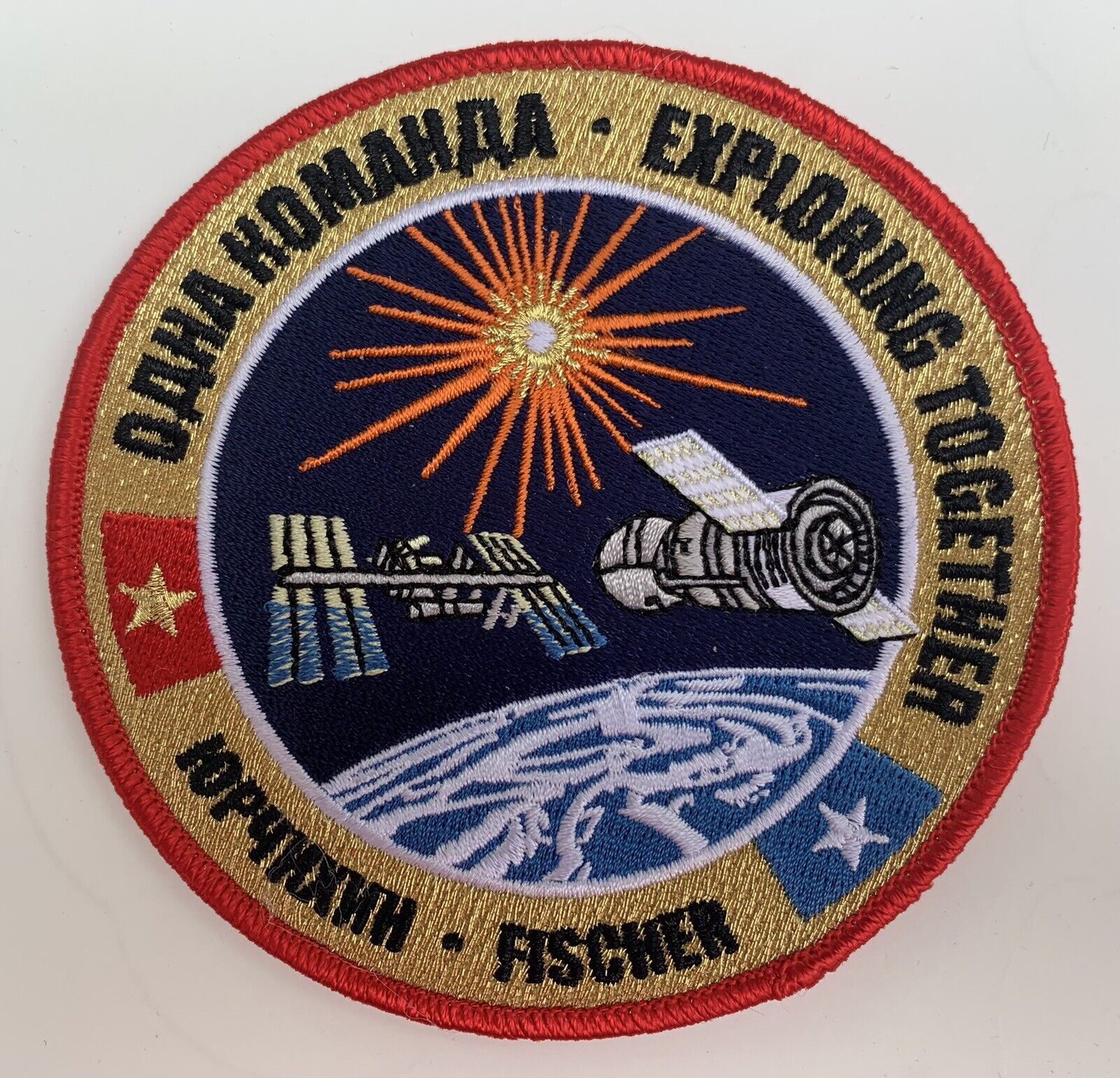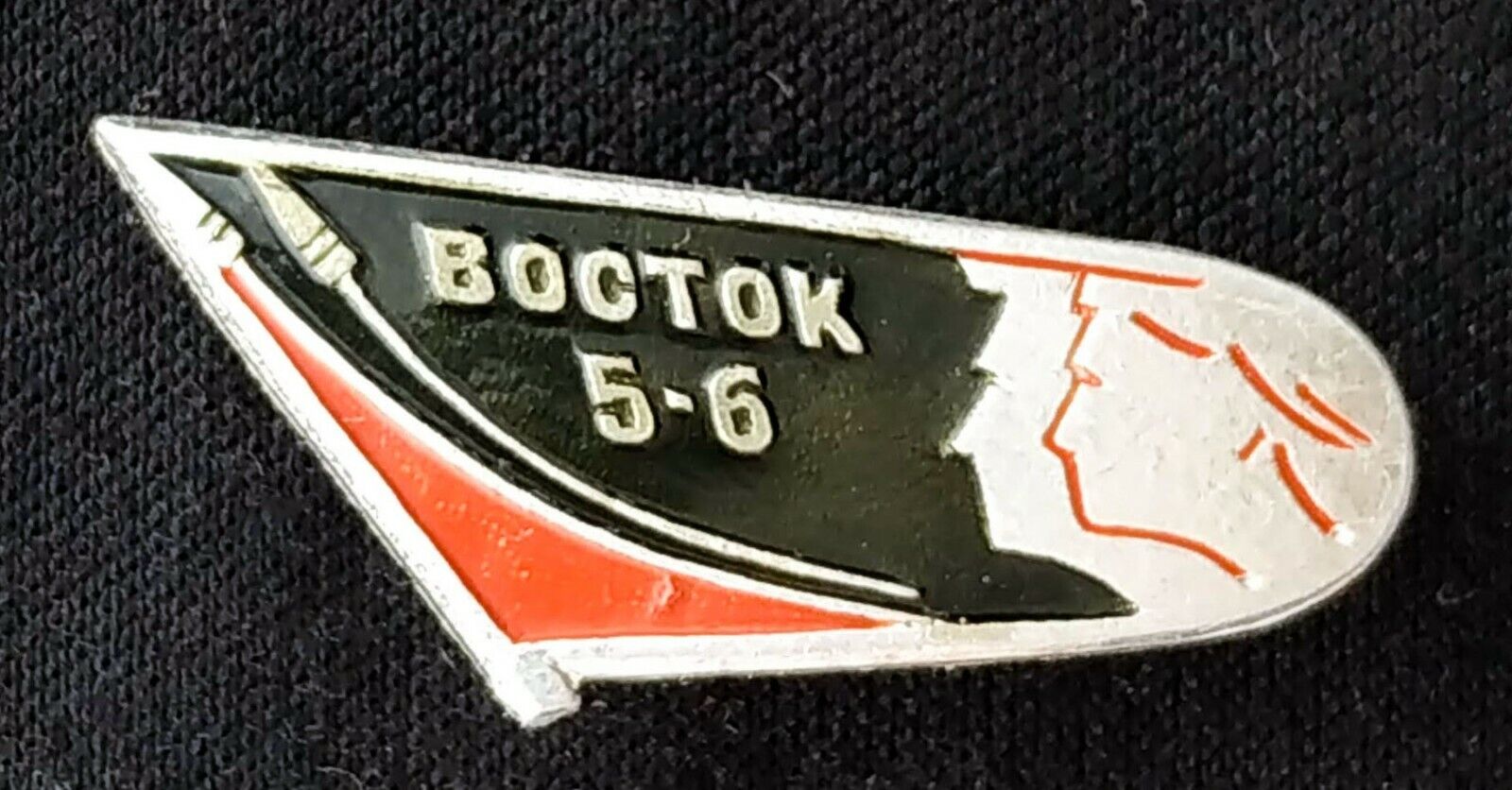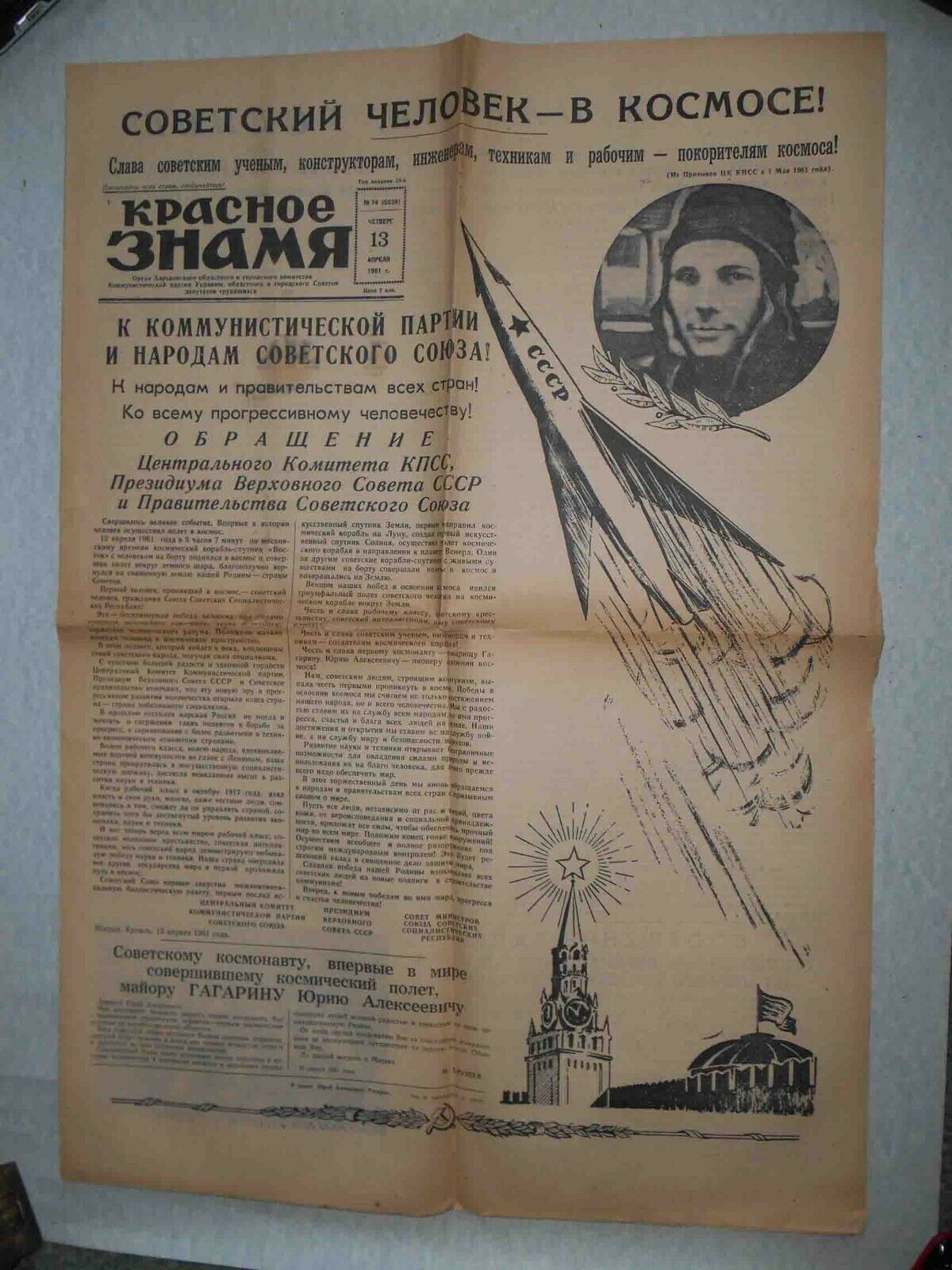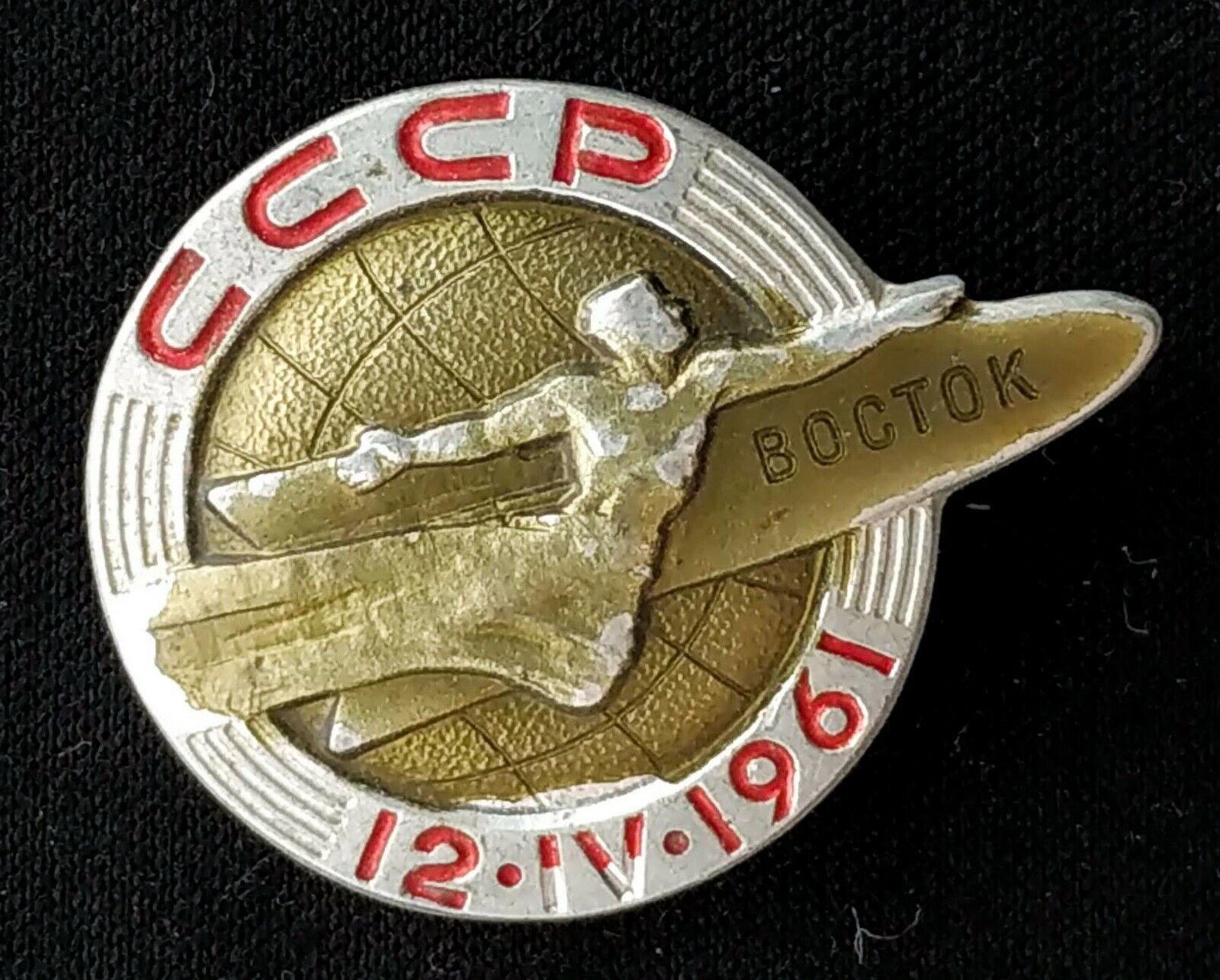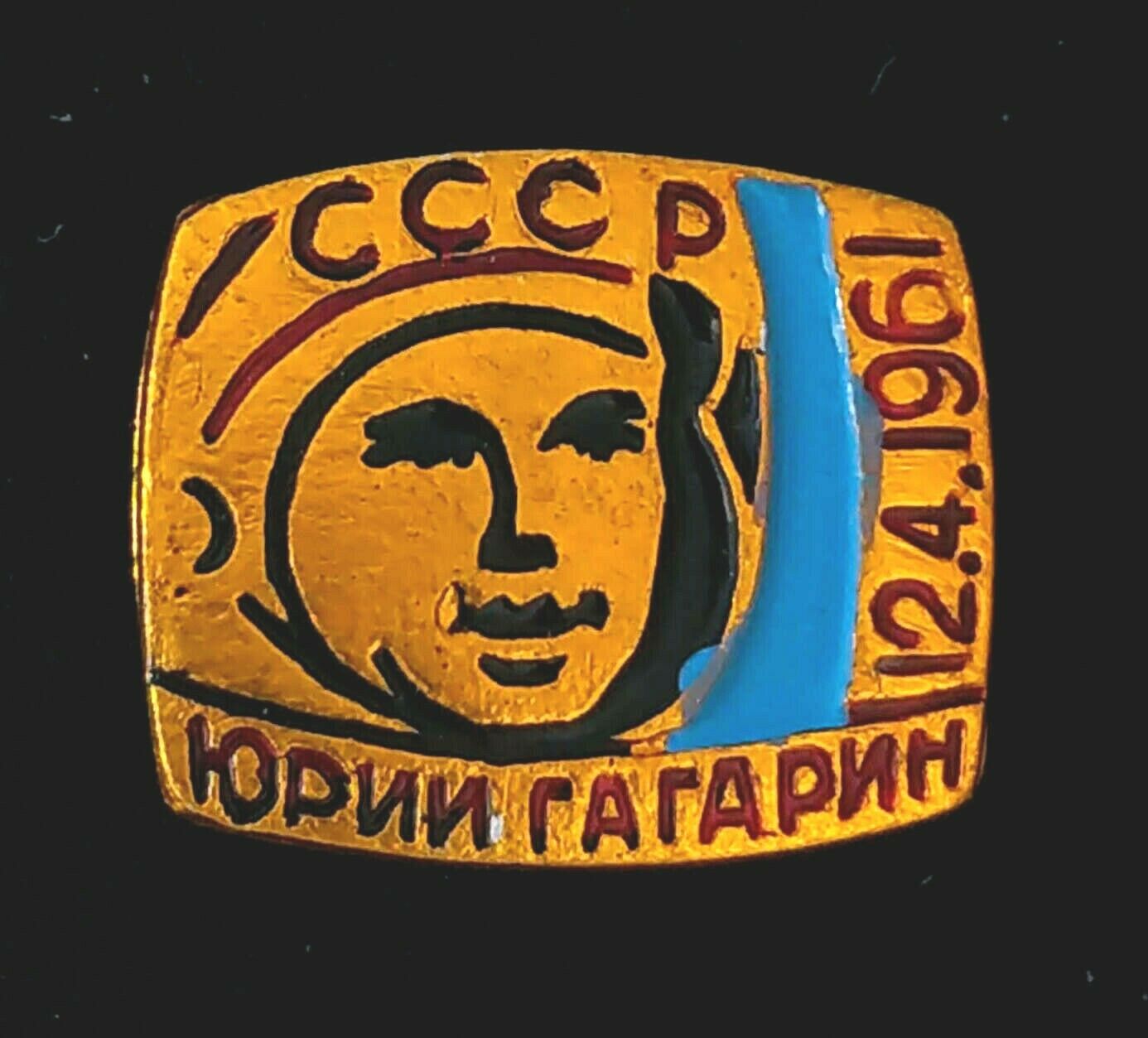-40%
1976 FIRST MAN IN SPACE YURI GAGRIN FIRST DAY COVERS LEATHER BOOK BY FLEETWOOD
$ 26.4
- Description
- Size Guide
Description
FOR YOUR CONSIDERATION:A vintage BOOKLET
*
*
*
FIRST MAN IN SPACE
*
*
*
YURI GAGARIN
FIRST DAY COVERS - 1976
15TH ANNIVERSARY OF THE FIRST MAN IN SPACE
This auction is for a wonderful vintage: Booklet of First Day Covers, to the First Man in Space Yuri Gagarin 1976 with an insert on Yuri Gagarin First Man in space.
All postmarked 1976.
The envelopes are enclosed in a black vinyl Fleetwood case.
Five 1976 First Day Covers of Yuri Gagarin First Man in Space - Russia
.
A Beautiful collection book.
Some Information on Yuri Gagarin
Yuri Gagarin
(March 9, 1934–March 27, 1968) made history on April 12, 1961, when he became both the first person in the world to enter space and the first person to orbit the Earth. Although he never again went to space, his achievement was one of the most significant events of the "
space race
" which eventually saw men land on the moon.
born in Klushino, a small village west of Moscow in Russia (then known as the Soviet Union). Yuri was the third of four children and spent his childhood on a collective farm where his father, Alexey Ivanovich Gagarin, worked as a carpenter and bricklayer and his mother, Anna Timofeyevna Gagarina, worked as a milkmaid.
In 1941, Yuri Gagarin was just 7 years old when the Nazis invaded the Soviet Union. Life was difficult during the war and the Gagarins were kicked out of their home. The Nazis also sent Yuri's two sisters to Germany to work as forced laborers.
Gagarin Learns to Fly
In school, Yuri Gagarin loved both mathematics and physics. He continued on to a trade school, where he learned to be a metalworker and then went on to an industrial school. It was at the industrial school in Saratov that he joined a flying club. Gagarin learned quickly and was obviously at ease in a plane. He made his first solo flight in 1955.
Since Gagarin had discovered a love of flying, he joined the Soviet Air Force. Gagarin's skills led him to the Orenburg Aviation School, where he learned to fly MiGs. On the same day he graduated from Orenburg with top honors in November 1957, Yuri Gagarin married his sweetheart, Valentina ("Valy") Ivanovna Goryacheva. The couple eventually had two daughters together.
After graduating, Gagarin was sent on some missions. However, while Gagarin enjoyed being a fighter pilot, what he really wanted to do was to go to space. Since he had been following the Soviet Union's progress in space flight, he was confident that soon his country would send a man into space. He wanted to be that man, so he volunteered to be a cosmonaut.
Gagarin Applies to Be a Cosmonaut
Yuri Gagarin was just one of 3,000 applicants to be the first Soviet cosmonaut. Out of this large pool of applicants, 20 were chosen in 1960 to be the Soviet Union's first cosmonauts; Gagarin was one of the 20.
During the extensive physical and psychological testing required of the chosen cosmonaut trainees, Gagarin excelled at the tests while maintaining a calm demeanor as well as his sense of humor. Later, Gagarin would be chosen to be the first man into space because of these skills. (It also helped that he was short in stature since
Vostok 1's
capsule was small.)
Cosmonaut trainee Gherman Titov
was chosen to be the backup in case Gagarin was unable to make the first space flight.
Launch of Vostok 1
On April 12, 1961, Yuri Gagarin boarded
Vostok 1
at the Baikonur Cosmodrome. Although he was fully trained for the mission, no one knew if it was going to be a success or a failure. Gagarin was to be the very first human being in space, truly going where no man had gone before.
Minutes before the launch, Gagarin gave a speech, which included:
You must realize that it is hard to express my feeling now that the test for which we have been training long and passionately is at hand. I don't have to tell you what I felt when it was suggested that I should make this flight, the first in history. Was it joy? No, it was something more than that. Pride? No, it was not just pride. I felt great happiness. To be the first to enter the cosmos, to engage single handed in an unprecedented duel with nature—could anyone dream of anything greater than that? But immediately after that I thought of the tremendous responsibility I bore: to be the first to do what generations of people had dreamed of; to be the first to pave the way into space for mankind.
*
Vostok 1
, with Yuri Gagarin inside, launched on schedule at 9:07 a.m. Moscow Time. Just after lift-off, Gagarin reputedly called out, "Poyekhali!" ("Off we go!")
Gagarin was rocketed into space using an automated system. Gagarin did not control the spacecraft during his mission; however, in case of an emergency, he could have opened an envelope left on board for the override code. He was not given the controls because many scientists were worried about the psychological effects of being in space (i.e. they were worried he would go mad).
After entering space, Gagarin completed a single orbit around Earth. The
Vostok 1's
top speed reached 28,260 kph (about 17,600 mph). At the end of the orbit,
Vostok 1
reentered the Earth's atmosphere. When
Vostok 1
was still about 7 km (4.35 miles) from the ground, Gagarin ejected (as planned) from the spacecraft and used a parachute to land safely.
From launch (at 9:07 a.m.) to
Vostok 1
touching down on the ground (10:55 a.m.) was 108 minutes, a number often used to describe this mission. Gagarin landed safely with his parachute about 10 minutes after Vostok 1 came down. The calculation of 108 minutes is used because the fact that Gagarin ejected from the spacecraft and parachuted to the ground was kept secret for many years. (The Soviets did this to get around a technicality about how flights were officially recognized at the time.)
Right before Gagarin landed (near the village of Uzmoriye, near the Volga River), a local farmer and her daughter spotted Gagarin floating down with his parachute. Once on the ground, Gagarin, dressed in an orange spacesuit and wearing a large white helmet, terrified the two women. It took Gagarin a few minutes to convince them that he too was Russian and to direct him to the nearest phone.
Death
After his successful first
flight into space
, Gagarin never again was sent into space. Instead, he helped train future cosmonauts. On March 27, 1968, Gagarin was test-piloting a MiG-15 fighter jet when the plane plummeted to the ground, killing Gagarin instantly at the age of 34.
For decades, people speculated about how Gagarin, an experienced pilot, could safely fly to space and back but die during a routine flight. Some thought he was drunk. Others believed that Soviet leader Leonid Brezhnev wanted Gagarin dead because he was jealous of the cosmonaut's fame.
However, in June 2013, fellow cosmonaut, Alexey Leonov (the first man to conduct a spacewalk), revealed that the accident was caused by a Sukhoi fighter jet that had been flying too low. Traveling at
supersonic speed
, the jet flew perilously close to Gagarin's
MiG
, likely overturning the MiG with its backwash and sending Gagarin's jet into a deep spiral.
Legacy
Nearly as soon as Gagarin's feet touched the ground back on Earth, he became an international hero. His accomplishment was known around the globe. He had accomplished what no other human being had ever done before. Yuri Gagarin's successful flight into space paved the way for all future space exploration.
Condition is as follows: A nice vintage In good condition,
for a 45 year old item.
in plastic casing in a leather bound book.
Approximate Dimensions are as follows: 7
" x 4
1/2
"
Please take a look at the provided photographs, for a better view of the written description.
PLEASE READ
Please complete checkout before making payment, it will make this whole process, much easier .
Per eBay's direction we are allowed to offer one method for payment: That method is: PayPal.
If this method is a hardship for you, then please contact us for accepted alternative payment methods.
We will gladly comb
ine shipping for multiple items which close within 48 hours of the original purchase. In order to take advantage of this reduced shipping rate, please make one payment for all combined items, otherwise all purchases will be treated individually and shipped accordingly.
We will cordially leave you feedback, when we receive feedback from you, which will let us know that you have received your purchase.
T
hank
Y
ou
